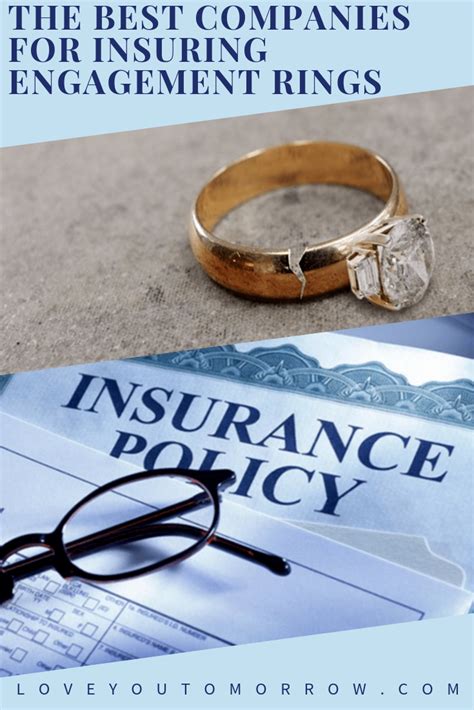Liability Insurance Coverage Cost

Liability insurance is a critical component of any risk management strategy, providing a vital financial safety net for businesses and individuals alike. In an increasingly litigious world, understanding the cost of liability coverage is essential to ensure adequate protection without straining financial resources. This comprehensive guide will delve into the various factors influencing liability insurance premiums, providing an in-depth analysis to help readers make informed decisions regarding their coverage needs.
Understanding Liability Insurance

Liability insurance is a form of coverage designed to protect policyholders from claims arising from injuries, property damage, or other specified losses for which they are held legally responsible. It is a fundamental risk management tool, offering financial protection against potential lawsuits and legal liabilities. This insurance is particularly crucial for businesses, as it can cover a wide range of risks, from product liability to professional errors and omissions.
For individuals, liability insurance is often a component of homeowner's or renter's insurance policies, providing protection against claims for bodily injury or property damage that occur on the insured's property or as a result of their actions. The scope of liability insurance can vary widely, depending on the specific policy and the risks it is designed to cover.
Factors Influencing Liability Insurance Costs

The cost of liability insurance is influenced by a multitude of factors, each of which can significantly impact the premium a policyholder pays. Understanding these factors is crucial for businesses and individuals to secure adequate coverage at a reasonable cost.
Risk Profile
The risk profile of a business or individual is one of the most significant determinants of liability insurance premiums. Insurers assess the potential risks associated with the insured’s activities and operations to determine the likelihood of claims being made against the policy. For instance, a construction company with a history of accidents on job sites would likely face higher premiums than a similar-sized company with a spotless safety record.
Similarly, individuals with a history of accidents or claims on their homeowner's or renter's insurance may face higher liability insurance costs. Insurers use this information to assess the potential financial risk they are taking on by insuring the policyholder.
Coverage Limits
The amount of coverage an insured chooses to purchase also significantly affects the cost of their liability insurance. Higher coverage limits typically result in higher premiums, as the insurer is taking on more financial risk. For businesses, especially those in high-risk industries, it is essential to strike a balance between adequate coverage and manageable premiums.
For example, a small business with $1 million in annual revenue may opt for a $2 million liability coverage limit. This decision is influenced by factors such as the potential risks the business faces, the financial impact of a significant claim, and the business's ability to absorb the cost of increased premiums.
| Coverage Limit | Annual Premium |
|---|---|
| $1 Million | $1,200 |
| $2 Million | $1,800 |
| $5 Million | $3,500 |

Industry and Business Type
The industry a business operates in and its specific type of operation can also significantly impact liability insurance costs. Some industries are inherently riskier than others, and therefore attract higher premiums. For instance, construction, manufacturing, and transportation industries often face higher liability risks and premiums.
Additionally, the specific operations within a business can influence insurance costs. For example, a restaurant that serves alcohol may face higher premiums due to the increased risk of liability claims related to alcohol consumption.
Claims History
An insured’s claims history is a key factor in determining liability insurance premiums. Insurers use this information to assess the potential risk of future claims. A business or individual with a history of frequent claims is likely to face higher premiums, as they are considered a higher risk to insure.
Conversely, a policyholder with a clean claims history may be rewarded with lower premiums. Insurers view these policyholders as less likely to make claims in the future, which reduces the insurer's financial risk.
Deductibles and Policy Terms
The deductibles chosen by a policyholder, as well as the terms of their policy, can also affect the cost of liability insurance. A higher deductible typically results in a lower premium, as the policyholder is assuming more financial responsibility in the event of a claim. However, it’s important to choose a deductible that the policyholder can comfortably afford to pay if a claim occurs.
Similarly, the terms of the policy, including the coverage period and the frequency of premium payments, can influence the overall cost. Longer coverage periods and annual premium payments may result in lower overall costs compared to shorter periods and monthly payments.
Managing Liability Insurance Costs
While the cost of liability insurance is influenced by a multitude of factors that may be beyond an insured’s control, there are strategies that businesses and individuals can employ to manage their premiums and ensure they are getting the best value for their insurance dollar.
Risk Management Strategies
Implementing robust risk management strategies can help reduce the likelihood of claims and, consequently, lower liability insurance costs. This could involve investing in safety training for employees, implementing strict safety protocols, or using technology to mitigate risks. For instance, a manufacturing company could install advanced safety equipment to reduce the risk of workplace accidents, thereby lowering its liability insurance premiums.
Bundling Policies
Bundling multiple insurance policies with the same insurer can often result in cost savings. Many insurers offer discounts when policyholders purchase multiple policies, such as liability insurance along with property insurance or professional liability insurance. This strategy can be particularly beneficial for businesses that require a comprehensive insurance portfolio.
Shopping Around and Comparing Quotes
Liability insurance premiums can vary significantly between insurers, even for similar coverage. Shopping around and comparing quotes from multiple insurers can help policyholders find the best value for their insurance needs. It’s important to compare not just the premiums, but also the coverage limits, deductibles, and exclusions to ensure the policies are comparable.
Regular Policy Reviews
Regularly reviewing and updating insurance policies is crucial to ensure they remain aligned with a business or individual’s changing needs and circumstances. As businesses grow, their operations and risks may evolve, requiring adjustments to their liability insurance coverage. Similarly, individuals may need to adjust their coverage as their personal circumstances change.
Understanding Policy Exclusions
Policy exclusions are an important consideration when choosing liability insurance. These are specific circumstances or types of claims that are not covered by the policy. Understanding these exclusions is crucial to ensure the policy provides the level of protection the policyholder requires. If certain risks are not covered by the policy, the policyholder may need to consider additional coverage or alternative risk management strategies.
Case Studies: Real-World Examples
Examining real-world examples can provide valuable insights into the cost of liability insurance and the factors that influence it. Here are two case studies to illustrate these concepts.
Case Study 1: Small Business Liability Insurance
John, a small business owner, operates a local cafe. He is concerned about the cost of liability insurance and wants to ensure he is adequately covered without paying excessive premiums. John’s cafe serves a wide range of customers, from local residents to tourists, and he is particularly concerned about the risk of slip-and-fall accidents on his premises.
John's risk profile is relatively low, as his cafe has a strong safety culture and a good claims history. He chooses a liability insurance policy with a coverage limit of $2 million and a $1,000 deductible. The annual premium for this policy is $1,500, which John feels is a reasonable cost given his risk profile and the potential financial impact of a significant claim.
Case Study 2: Professional Liability Insurance
Sarah, a freelance graphic designer, provides design services to a variety of clients. She is aware of the risks associated with her profession, particularly the potential for copyright infringement claims or errors in her work that could result in financial loss for her clients. Sarah wants to ensure she has adequate professional liability insurance to protect her business.
Given the nature of her work, Sarah's risk profile is relatively high. She chooses a professional liability insurance policy with a coverage limit of $1 million and a $500 deductible. The annual premium for this policy is $1,200, which Sarah considers a necessary investment to protect her business and its reputation.
Future Trends and Implications

The landscape of liability insurance is continually evolving, influenced by a range of factors including changes in legislation, advancements in technology, and shifts in societal attitudes. Understanding these trends and their potential implications can help businesses and individuals anticipate future changes in liability insurance costs and coverage.
Legislative Changes
Changes in legislation, particularly those related to liability and compensation, can significantly impact liability insurance costs. For example, an increase in compensation limits for personal injury claims could lead to higher liability insurance premiums, as insurers would need to pay out more in the event of a claim. Conversely, reforms that reduce the scope of liability could lead to lower premiums.
Advancements in Technology
Advancements in technology can both increase and decrease liability risks. On one hand, new technologies can introduce new risks and potential liabilities, particularly in industries that are quick to adopt innovative solutions. On the other hand, technology can also be used to mitigate risks, such as through the use of advanced safety systems or predictive analytics to identify potential hazards.
Changing Societal Attitudes
Shifts in societal attitudes towards liability and compensation can also influence insurance costs. For example, an increasing focus on personal accountability and a growing willingness to pursue legal action could lead to a rise in liability claims, potentially driving up insurance premiums. Conversely, a shift towards a more collaborative approach to resolving disputes could reduce the number of claims, leading to lower premiums.
Economic Factors
Economic conditions can also play a role in liability insurance costs. During economic downturns, businesses may face increased financial pressure, leading to a higher risk of default on insurance premiums or even fraud. Insurers may respond by increasing premiums to offset this risk. Conversely, a strong economy can lead to increased business activity and higher premiums as businesses expand their operations and face greater exposure to risk.
Conclusion
Understanding the cost of liability insurance is a complex but crucial aspect of risk management for businesses and individuals. By recognizing the factors that influence insurance premiums and implementing effective strategies to manage these costs, policyholders can ensure they are adequately protected without incurring excessive financial burdens.
As the landscape of liability insurance continues to evolve, staying informed about future trends and their potential implications is essential. By anticipating changes and adapting their risk management strategies accordingly, businesses and individuals can navigate the complexities of liability insurance with confidence and ensure they remain protected in an increasingly uncertain world.
What is the average cost of liability insurance for a small business?
+The average cost of liability insurance for a small business can vary significantly based on a range of factors, including the business’s industry, size, location, and claims history. However, as a general guide, small businesses can expect to pay anywhere from a few hundred dollars to several thousand dollars annually for liability insurance. It’s important to note that these figures are just estimates, and the actual cost will depend on the specific circumstances of each business.
How can I reduce the cost of my liability insurance premiums?
+There are several strategies you can employ to potentially reduce your liability insurance premiums. These include implementing robust risk management strategies to reduce the likelihood of claims, bundling multiple insurance policies with the same insurer to take advantage of multi-policy discounts, regularly reviewing and updating your insurance policies to ensure they remain aligned with your changing needs, and understanding your policy exclusions to ensure you have the coverage you require.
Are there any tax benefits associated with liability insurance premiums?
+Yes, liability insurance premiums may be tax-deductible for businesses. However, the deductibility of insurance premiums can be complex and depends on a range of factors, including the type of insurance, the business structure, and the use of the insurance. It’s important to consult with a tax professional to understand the specific tax implications of your liability insurance premiums.
What should I do if I can’t afford the cost of liability insurance?
+If you’re struggling to afford the cost of liability insurance, there are several steps you can take. First, review your insurance policy to ensure you’re not paying for coverage you don’t need. You can also shop around and compare quotes from multiple insurers to find the best value for your insurance dollar. Additionally, consider implementing risk management strategies to reduce your liability risks, which may result in lower insurance premiums. If you’re still unable to afford the cost of liability insurance, you may need to reevaluate your business operations or seek professional advice to identify potential solutions.



